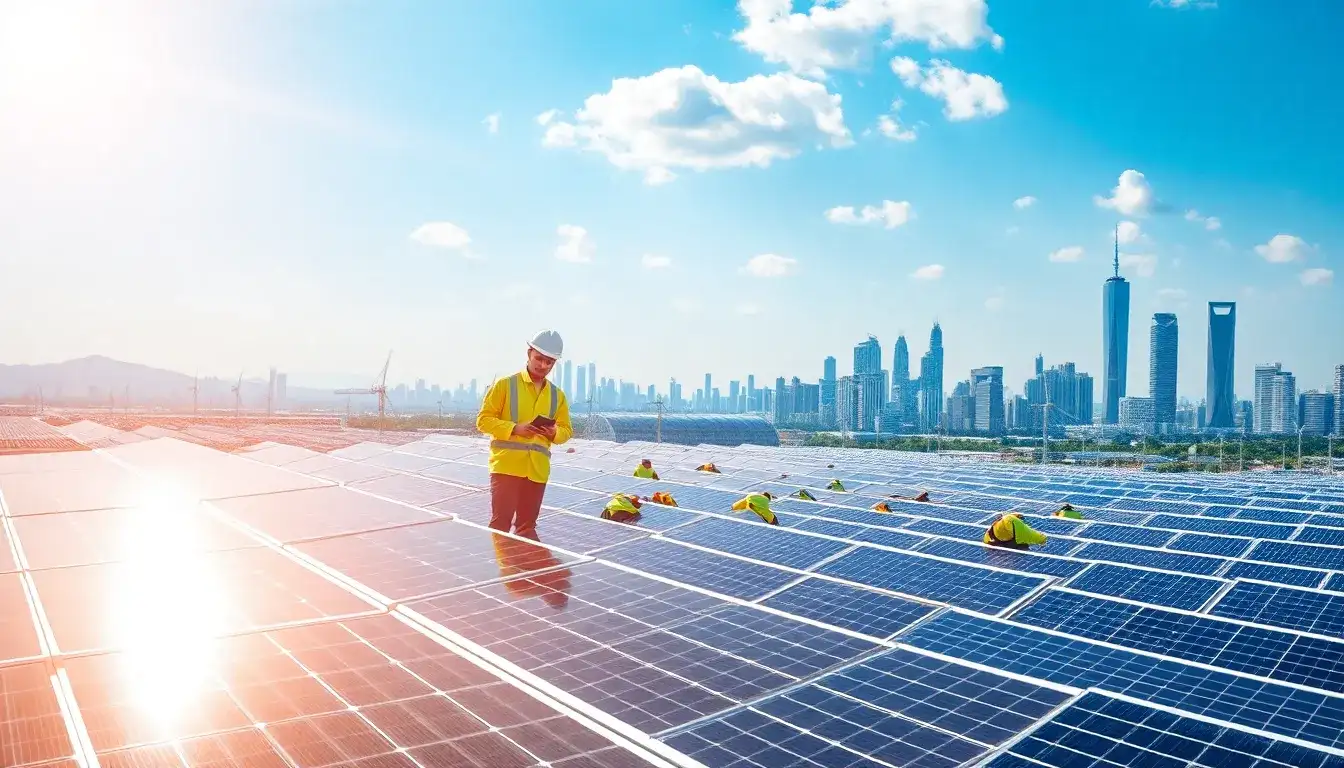
New Technologies Propel the Photovoltaic Industry Forward
According to the latest data from the Ministry of Industry and Information Technology, the production capacity of major segments of China’s photovoltaic (PV) industry chain is expected to continue its growth in 2024. The production of photovoltaic polysilicon, silicon wafers, cells, and modules has all seen year-on-year increases exceeding 10%, with the industry’s total output remaining at a trillion-yuan scale. In terms of exports, the volume of photovoltaic cell and module exports grew by over 40% and 12%, respectively.
After years of continuous innovation, China’s photovoltaic industry has transitioned from a latecomer to a global leader. Industry analysts believe that enhancing independent innovation capabilities and developing original technologies are crucial for maintaining this leadership and achieving breakthroughs in the sector.
Recently, a research group led by Professor Tan Hairen from Nanjing University’s School of Modern Engineering and Applied Sciences made significant advancements in all-perovskite tandem solar cells. Certified by an internationally recognized third-party organization, these cells achieved a remarkable 29.1% efficiency in photoelectric conversion, further advancing research and industrialization in this area.
In June 2022, the Ministry of Science and Technology, along with eight other departments, released the “Implementation Plan for Technology Supporting Carbon Peaking and Carbon Neutrality (2022-2030),” which emphasizes the key research and development of high-efficiency and stable perovskite cells as part of third-generation photovoltaic technologies. Under the joint efforts of various companies in the photovoltaic sector, perovskite cells are rapidly moving from the laboratory to the industrialization phase.
On the coastline of Haiyang, Shandong, the National Energy Investment Group’s 10MW perovskite photovoltaic power station is quietly changing perceptions about the industry. Wang Gang, Chairman of Jinjing Group Co., Ltd., explains, “The power generation of this station significantly surpasses that of traditional crystalline silicon modules, especially in rainy conditions, where it can still maintain stable power output.” He further noted that the energy consumption per watt for producing perovskite photovoltaic modules is only one-seventeenth that of monocrystalline silicon. The raw material costs for perovskite components are approximately 50% of those for crystalline silicon, and the mass production costs for gigawatt-scale production lines can be reduced by over 30%.
The conversion efficiency of perovskite tandem components has reached 26%, with the theoretical conversion efficiency of single-junction perovskite cells reaching 33%, surpassing the theoretical limit of 29.4% for crystalline silicon cells.
Maximizing the efficient use of sunlight has always been the goal of the photovoltaic industry. As a new type of clean energy, perovskite solar cells are injecting new momentum into regional development. Wang Gang suggests that provinces with resource advantages can establish differentiated industrial clusters. For instance, Jiangsu is focusing on gigawatt-scale production of perovskite, Shandong is enhancing the research and development of key foundational materials while extending industrial chain advantages, Inner Mongolia’s Tongliao is leveraging its natural soda resources, and Ningxia’s Shizuishan is taking advantage of its sandstone resources to prepare for the rapid development of the perovskite photovoltaic industry.
As “photovoltaic expansion” accelerates, China’s photovoltaic sector is providing a significant impetus for the global energy structure transformation, becoming a hallmark of Chinese innovation. Transitioning from a situation where raw materials, equipment, and markets were largely overseas, China now accounts for nearly half of the global installed photovoltaic capacity and over 80% of the major manufacturing processes, marking a leap in the development of its photovoltaic industry.
Industry experts note that starting from scratch and evolving from a follower to a leader, China’s photovoltaic sector has experienced rapid growth in recent years, with a significant increase in the localization of key components. It is becoming a new growth point for exports, characterized by high technology, high added value, and leadership in green transformation. The application and rapid development of solar photovoltaics provide crucial pathways for China to achieve its “dual carbon” goals and contribute to a more sustainable and cleaner environment, while also offering vital solutions for energy independence and control.







